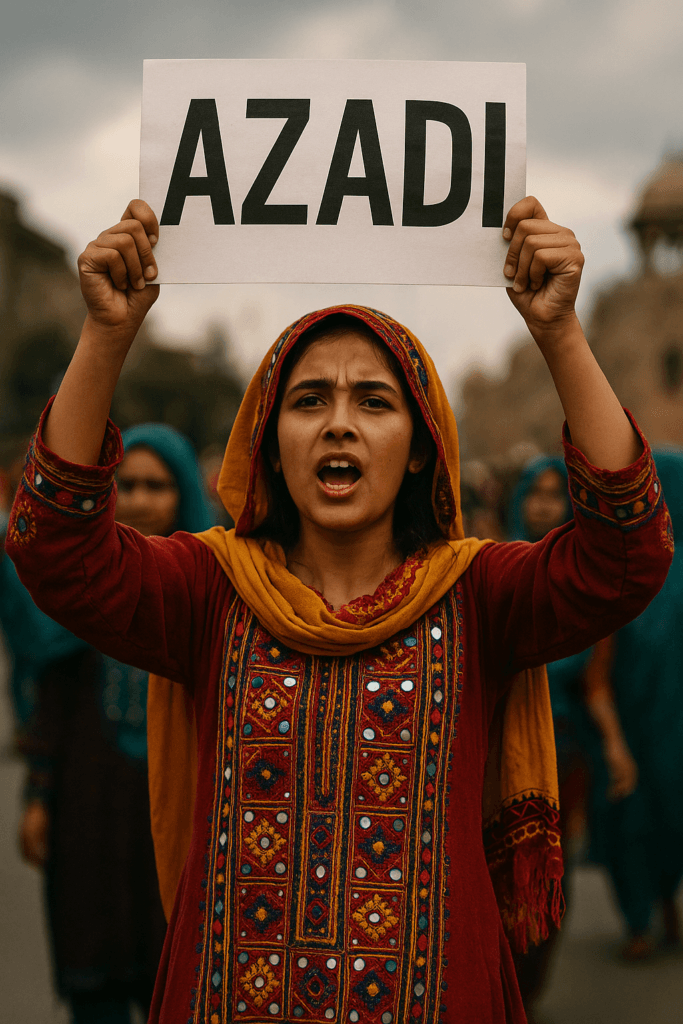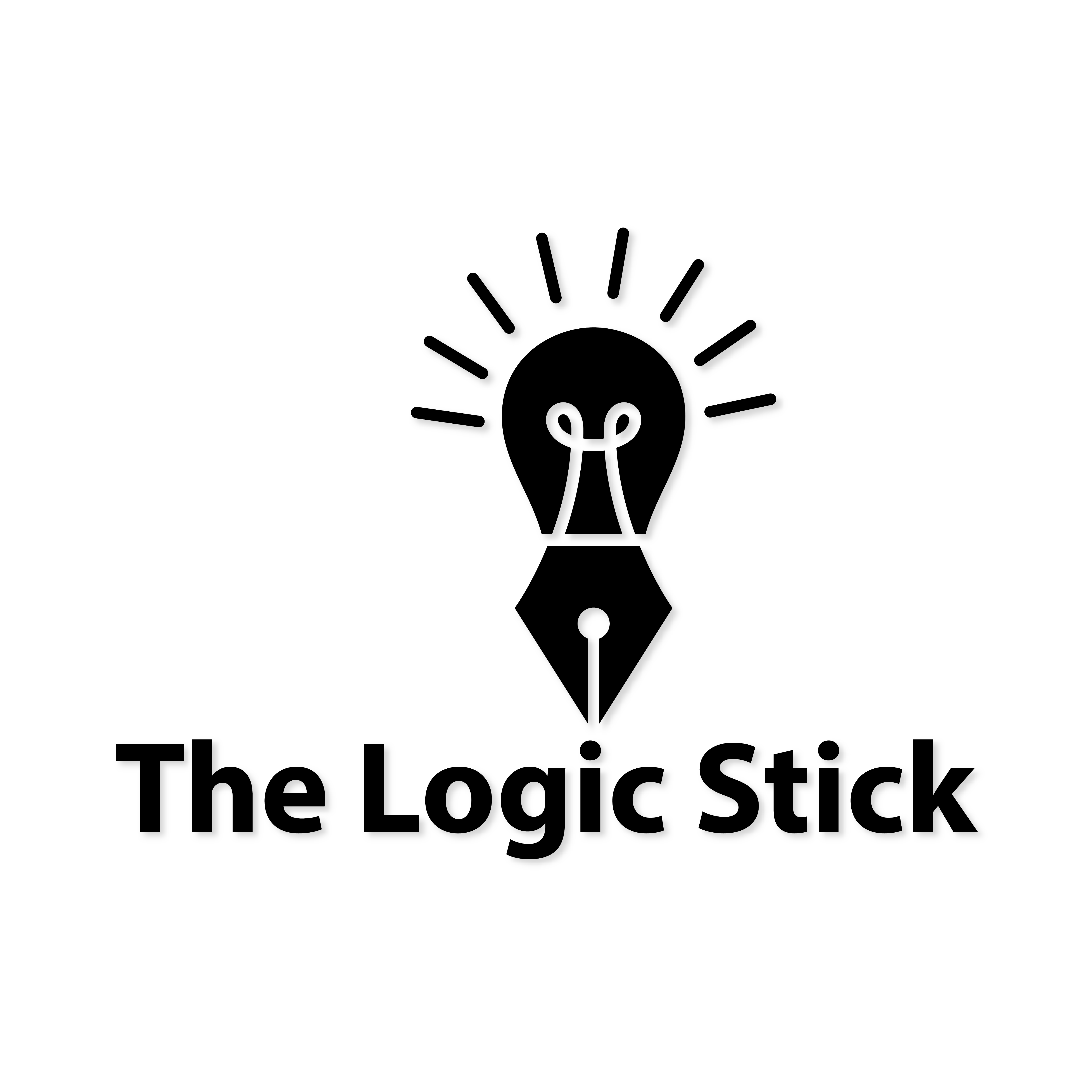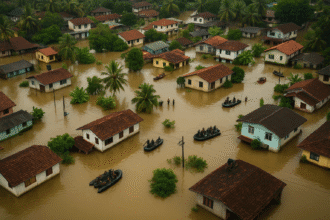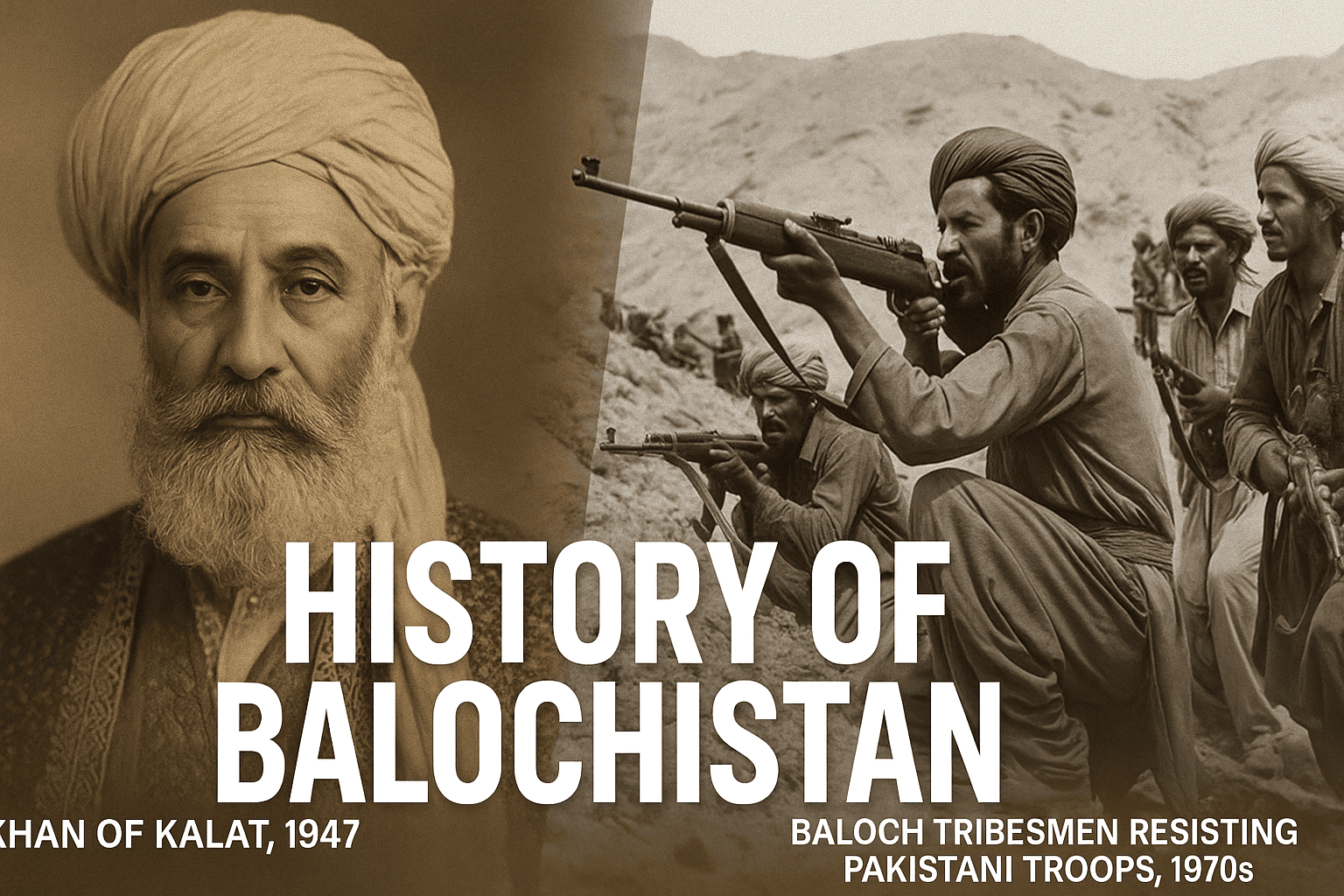The Balochistan Liberation Army (BLA) has declared independence from Pakistan, announcing the formation of the “Democratic Republic of Balochistan.” This declaration follows a series of coordinated attacks under “Operation Herof,” targeting Pakistani military and intelligence installations across Balochistan. The BLA’s actions and statements highlight a renewed push for autonomy, citing historical grievances and ongoing human rights concerns.
Introduction to the Timeline & Strategic Analysis:
What began as a decades-long resistance movement rooted in political suppression and economic marginalization has, in May 2025, erupted into one of the most significant geopolitical flashpoints in South Asia. From the launch of a coordinated military campaign under Operation Herof to the bold declaration of independence by the Balochistan Liberation Army, the conflict has escalated into an international issue—impacting Pakistan’s territorial integrity, China’s regional investments, and India’s strategic calculus.
The following sections break down the historical roots, military operations, political declarations, regional implications, and global reactions—offering a comprehensive understanding of how Balochistan’s struggle for autonomy is reshaping the South Asian order.
1. Historical Context: The Roots of the Balochistan Conflict
The conflict in Balochistan is not a product of recent unrest, nor is it merely an issue of separatism. It is the consequence of decades of political marginalization, economic exploitation, cultural suppression, and heavy-handed military interventions that date back to the founding years of Pakistan.
The Accession Controversy: 1947–1948
Balochistan, the largest province of present-day Pakistan by area, was once a sovereign princely state known as the Khanate of Kalat. At the time of India’s Partition in 1947, the Khan of Kalat, Mir Ahmad Yar Khan, initially refused to accede to Pakistan, opting instead to remain independent.
This decision was backed by Kalat’s elected parliament, which voted against joining Pakistan. For a few months, Balochistan remained autonomous, flying its own flag, managing its own laws, and resisting overtures from Pakistan’s new central leadership.
However, in March 1948, under pressure and threats from the newly formed Pakistani government, Kalat was annexed into Pakistan. The accession, though later formalized, has since been regarded by Baloch nationalists as an illegal occupation, sparking the first of five insurgencies that would follow over the next 75 years.

Timeline of Major Baloch Uprisings
1958–59: The First Armed Resistance
The first major rebellion against the Pakistani state broke out in 1958, just a decade after the annexation. It was led by Prince Abdul Karim, the younger brother of the Khan of Kalat, and symbolized the early resistance to forced integration and loss of sovereignty. Though quickly suppressed, this uprising planted the seeds of future revolts.
1962–63: The Second Insurgency
A second wave of unrest emerged during President Ayub Khan’s regime. This movement, though less intense, focused on issues such as federal neglect, land ownership rights, and the imposition of centralized administrative policies. The response again was military-led and lacked political negotiation.
1973–77: The Most Widespread Insurgency
Perhaps the most notable uprising prior to the 21st century occurred in the 1970s, following Prime Minister Zulfikar Ali Bhutto’s dismissal of the Balochistan provincial government. Accused of harboring secessionist ambitions, the elected government was dissolved, and the army moved in. This led to a full-blown insurgency, with over 50,000 Baloch fighters taking up arms.
The conflict saw heavy aerial bombardments, displacement of tens of thousands, and widespread killings. It ended in 1977 with military suppression, but resentment and mistrust remained deeply embedded within the Baloch psyche.
2003–Present: The Longest Insurgency
The current phase of unrest, which began in 2003, has evolved into a low-intensity but protracted conflict. It was triggered by the assassination of Nawab Akbar Bugti, a former chief minister and governor of Balochistan, who had become a fierce critic of Pakistan’s military operations and China’s resource deals in the province.
Bugti’s killing by the Pakistan Army in 2006 became a rallying point for Baloch nationalists. Since then, thousands of civilians, political activists, and students have gone missing—many of them allegedly victims of Pakistan’s “kill and dump” policy, according to human rights organizations like HRW, Amnesty International, and Baloch Human Rights Council.
Core Grievances of the Baloch People
- Political Marginalization: Despite being resource-rich, Balochistan remains politically underrepresented in Pakistan’s federal system. Elected leaders are often dismissed or replaced by Islamabad-appointed administrators.
- Economic Exploitation: Balochistan produces over 40% of Pakistan’s natural gas and holds vast mineral reserves including gold, copper, and coal, yet remains the country’s poorest province. The local population alleges that resources are extracted without fair compensation or reinvestment.
- Cultural Suppression: The Baloch language and culture face systemic neglect. Educational and media content are dominated by Urdu and Punjabi narratives, while Baloch identity is often treated with suspicion.
- Militarization and Human Rights Violations: The province is heavily militarized, and enforced disappearances, extrajudicial killings, and torture of political prisoners have become disturbingly routine. NGOs and international journalists are often barred from entry.
Rise of the Balochistan Liberation Army (BLA)
Founded in the early 2000s, the Balochistan Liberation Army (BLA) is now the most prominent and organized separatist outfit in the region. The group has carried out attacks on Pakistani military convoys, gas pipelines, Chinese CPEC infrastructure, and even urban police stations.
In 2006, the U.S. State Department declared the BLA a terrorist organization, although many international human rights bodies view its actions through a lens of insurgency against military occupation, rather than pure terrorism.
The BLA has steadily built networks within the Baloch diaspora in Europe, the UK, and the Gulf, using digital platforms to mobilize support, share narratives, and document abuses.
2. Operation Herof: The BLA’s Coordinated Offensive That Shook Pakistan
On May 13, 2025, the Balochistan Liberation Army (BLA) launched its largest coordinated military operation in decades—codenamed Operation Herof. This bold and complex strike campaign signaled a decisive shift from isolated insurgent tactics to a structured, battlefield-style assault, aimed at crippling the Pakistani military presence in Balochistan and asserting the Baloch cause on the international stage.
The name “Herof,” meaning “revenge” in Balochi, was symbolic of the group’s retaliation for decades of military oppression, and especially a reaction to recent military operations in Kech and Panjgur that had led to the deaths of dozens of suspected Baloch youth.
Scope of Operation Herof
According to multiple reports and statements released by BLA spokesperson Jeeyand Baloch, Operation Herof involved:
- Over 70 coordinated attacks
- 51 target locations across Balochistan
- Strikes in Quetta, Panjgur, Kech, Nushki, Kohlu, and Dera Bugti
- Simultaneous use of IEDs, small arms, RPGs, and anti-aircraft guns
- Destruction of military outposts, police stations, Frontier Corps (FC) checkpoints, and intelligence offices
The attacks began in the early hours of May 13 and lasted well into the evening, making it one of the most sustained multi-location offensives carried out by a separatist group in South Asia since the Sri Lankan LTTE campaigns of the early 2000s.
High-Value Targets and Symbolic Assaults
- Quetta (Capital City):
BLA fighters targeted the Military Intelligence safehouse in the eastern quarter of Quetta and torched army supply trucks stationed at a local depot. Loud explosions were reported, and social media videos showed smoke billowing near army zones—though media coverage in Pakistan was restricted. - Panjgur and Kech Districts:
Known strongholds of Baloch militancy, these areas witnessed the most intense fighting. Roadblocks were ambushed, FC troops were fired upon, and in Kech, a communications tower used by the military was destroyed using shoulder-fired explosives. - Dera Bugti and Nushki:
BLA claimed to have hit a logistics convoy and a paramilitary training center, leading to significant loss of equipment and casualties. - Zhob and Washuk Regions:
Attacks were carried out on newly established Chinese-administered installations connected to the China-Pakistan Economic Corridor (CPEC)—a critical point of friction in the Baloch movement.
Reported Casualties
According to BLA’s official Telegram channel and various regional analysts:
- 130+ Pakistani personnel (including Frontier Corps and intelligence officers) were killed.
- Over 50 were injured, and at least a dozen posts were completely overrun.
- Several BLA fighters were reportedly martyred, though numbers remain unverified.
Pakistan’s Inter-Services Public Relations (ISPR) confirmed “multiple coordinated terror attacks” but downplayed casualties, stating that “several militants were neutralized” and “order had been restored.” However, reports from ground-level Baloch sources and intercepted communications painted a grimmer picture for Pakistan’s forces.
Strategy and Execution
What set Operation Herof apart from previous acts of insurgency was its military-level organization:
- Use of drones for reconnaissance
- Simultaneous multi-zone coordination—suggesting encrypted communication systems
- Ground support from sympathetic local populations
- Deliberate avoidance of civilian casualties, giving the BLA moral ground
The operation appeared to be months in planning, with insiders suggesting it was timed around Pakistan’s preoccupation with border tensions with India, allowing the BLA to exploit stretched security resources.
Symbolism of the Operation
Beyond military impact, Operation Herof sent a symbolic message:
- The Pakistani military is vulnerable in Balochistan despite its heavy presence.
- The Baloch cause is not dying—it is consolidating.
- The BLA is capable of acting not just as an insurgent group, but as a proto-army with territorial ambitions.
This shift drew comparisons with Bangladesh’s Mukti Bahini, which also transitioned from scattered resistance to organized liberation warfare in the early 1970s.
Censorship and Media Control in Pakistan
In the aftermath of the attacks, Pakistan imposed strict information controls:
- Internet services in Balochistan were partially suspended.
- Major Pakistani news outlets were instructed to downplay the attacks.
- Only government-controlled channels reported “isolated terrorist activity,” without acknowledging the scale.
In contrast, social media—especially X (formerly Twitter), Telegram, and Baloch activist networks—were flooded with on-ground visuals, BLA communiqués, and footage showing destruction of military installations.
The hashtag #RepublicOfBalochistan began trending globally, further adding to Pakistan’s diplomatic and reputational headache.
Pakistan’s Immediate Military Response
While Pakistan scrambled to regain control over affected zones, reports indicated that:
- Airstrikes were conducted in parts of Panjgur and Kech.
- House-to-house raids began in Quetta and surrounding rural areas.
- Suspected Baloch students and journalists were detained.
- The Pakistan Army deployed additional Frontier Corps battalions, leading to more clashes.
However, widespread protests and guerrilla pushbacks continued through the next day, effectively stalling Pakistan’s full-scale counter-operation.
3. The Declaration of the Republic of Balochistan: A New Nation or a Political Flashpoint?
On the morning of May 14, 2025, following the success of Operation Herof, the Balochistan Liberation Army (BLA), along with several other separatist factions and exiled leaders, formally declared independence from Pakistan. The announcement marked a historic moment in South Asia, as the Republic of Balochistan was proclaimed as a sovereign state—independent of Pakistani rule and open to diplomatic recognition.
This was not merely a symbolic gesture but a coordinated political act, backed by military pressure, international social media traction, and a sophisticated narrative campaign.
A Public Declaration on Social Platforms
The declaration was made via a joint digital statement by senior leaders of the Balochistan liberation movement, including prominent voices such as:
- Mir Yar Baloch – London-based intellectual and Baloch political theorist
- Dr. Allah Nazar Baloch – Former insurgent leader and spokesperson for Baloch Students Organization (Azad)
- Jeeyand Baloch – Military spokesperson of the BLA
A simultaneous campaign across Telegram, X (formerly Twitter), YouTube, and Facebook Live was launched under the hashtag #RepublicOfBalochistan, announcing the formation of an interim government, plans for a transitional constitution, and appeals for international recognition.
The visuals included:
- The Baloch national flag hoisted over captured posts
- Statements read aloud in English, Balochi, and Persian
- Declarations of a secular, democratic Baloch state
Also read – India Pakistan’s War Timeline 2025, 5 Days of Strikes, Strategy & Ceasefire
Key Highlights from the Declaration
- Complete Withdrawal of Pakistani Forces Demanded The declaration categorically stated: “All Pakistani military and paramilitary forces must vacate Baloch land. Their continued presence constitutes occupation.”
- Invitation to International Observers and the UN The BLA leadership invited:
- The United Nations
- International human rights observers
- Journalists and neutral NGOs
- Proposal for a Transitional Constitution A draft of a Transitional Charter was released, which included:
- Free elections within 18 months
- Protection of minority rights (including Hazaras and Sindhis)
- Secular governance and freedom of religion
- Equal participation for women
- A ban on religious extremism and foreign military bases
- Appeal to India and Afghanistan for Recognition In a statement that quickly gained attention, the BLA appealed to India, drawing a historical parallel: “Just as India stood by Bangladesh in 1971, we call on New Delhi to recognize the Republic of Balochistan and support our struggle against occupation and genocide.” Afghanistan’s exiled leaders were also named as possible allies in resisting Pakistan’s regional ambitions.
Political Structure: A Revolutionary Council
The Baloch leadership announced the formation of a “Balochistan National Revolutionary Council” (BNRC)—a 15-member body comprising military, civilian, and diaspora representatives.
- The council would function as the supreme transitional authority
- A roadmap to form a Constituent Assembly and hold referendums in tribal zones was announced
- A digital government portal was launched to track casualties, humanitarian needs, and foreign appeals
Global Media Response
International response was cautious but not dismissive.
- BBC World, Al Jazeera, Reuters, and The Guardian reported the declaration as “a critical development in South Asia.”
- Indian outlets like India Today, The Hindu, and NDTV covered it extensively, amplifying the digital messaging from Baloch sources.
- Pakistani media, under state directives, either ignored or dismissed the announcement as “terror propaganda.”
Within hours, #RepublicOfBalochistan, #BalochistanFreedom, and #PakistanCollapse were trending globally on X, with over 10 million mentions by mid-day.
Pakistan’s Denial and Information Warfare
The Pakistani government issued a swift and strongly worded denial, calling the declaration a “foreign-backed cyber hoax” and labeling the BLA’s claims “delusional and disconnected from ground realities.”
The Inter-Services Public Relations (ISPR) released a video from Quetta showing Pakistani flags flying at government buildings, though several observers noted the absence of time-stamps or civilian traffic, raising doubts about when and where it was shot.
Pakistan also claimed:
- No territory had been lost
- Militants were being hunted and “neutralized”
- No international actor would recognize such a “terrorist stunt”
Questions Around Legitimacy
While the declaration stirred momentum, several global experts questioned:
- Whether Baloch leaders control contiguous and defensible territory
- If external military or political backing exists to uphold the declaration
- The lack of recognition from any sovereign state or UN entity
However, supporters argued that:
- Declarations of independence are legitimate under international law if backed by a population’s will and ongoing human rights abuses
- The Kosovo and South Sudan precedents apply
- Recognition is a gradual process, often following symbolic declarations and strategic victories
Emotional Resonance for the Baloch People
Within the province and among the Baloch diaspora, the declaration had a profound emotional impact.
- In Sistan-Baluchestan (Iran) and Baloch communities in the Gulf, symbolic gatherings were held in support.
- Activist groups in Germany, Sweden, and Canada projected the Baloch flag on monuments and hosted digital solidarity events.
- Emotional videos circulated of families celebrating the announcement while calling for their missing loved ones.
This outpouring showed that even if the Republic of Balochistan exists only on paper for now, it lives powerfully in the imagination of its people.
4. India and Balochistan: Strategic Interests, Historical Ties, and Present-Day Calculations
The declaration of the Republic of Balochistan and the large-scale offensive under Operation Herof immediately drew attention to India’s long-standing interest in the region. While India has never officially supported separatist movements within Pakistan, its geopolitical calculus around Balochistan has evolved over the decades—from passive observation to active diplomatic signaling.
Understanding India’s position requires tracing the historical, strategic, and moral dimensions of its engagement with the Baloch cause.
India’s Early Position: Cautious Distance
Post-1947, India maintained a largely neutral stance on Balochistan. During the initial insurgencies in 1948, 1958, and 1963, India’s priority remained securing its own borders and managing its newly independent institutions.
Despite early Baloch appeals, India did not intervene militarily or diplomatically, in contrast to its later role in Bangladesh’s liberation in 1971.
Even after the 1973–77 insurgency, when Pakistani forces cracked down heavily on Baloch nationalists, India refrained from overt engagement. However, intelligence and diplomatic circles began quietly monitoring developments more closely.
The Bangladesh Parallel: Strategic Influence Through History
The Baloch separatist leadership has often compared their cause to Bangladesh’s liberation:
- In 1971, India intervened militarily and diplomatically to support Bengali nationalists against Pakistani repression.
- The creation of Bangladesh was viewed as India’s strategic victory, correcting what it considered the geopolitical injustice of Partition.
Similarly, the Baloch diaspora and leadership have long appealed to India to replicate that model, providing:
- Diplomatic recognition of a future free Balochistan
- Sanctuary for political exiles
- Intelligence and logistical support
While no public evidence confirms Indian military involvement, Pakistan has frequently accused India of supporting Baloch rebels—a claim New Delhi has consistently denied.
The Modi Government’s Shift in Tone
A notable change came in 2016, when Prime Minister Narendra Modi, during his Independence Day address from the Red Fort, publicly mentioned Balochistan—a first for any Indian head of state.
He stated:
“I want to thank the people of Balochistan, Gilgit, and Pakistan-occupied Kashmir for the love they have shown India.”
This marked a significant diplomatic signal. For the first time, India:
- Raised Balochistan in international forums, including at the UN General Assembly.
- Allowed Baloch exiled activists to speak at Indian platforms.
- Created room in Indian strategic discourse for a Baloch counter-narrative to Pakistan’s Kashmir obsession.
Though no formal policy shift was announced, this signaled India’s willingness to use Balochistan as a diplomatic counterweight to Pakistan’s consistent interference in Kashmir.
Strategic Interests in Balochistan
India’s growing interest in Balochistan is not only ideological—it is strategic:
- Counterbalance to CPEC
Balochistan is central to the China-Pakistan Economic Corridor (CPEC). Gwadar Port, a flagship CPEC project, lies at the heart of Baloch discontent. India opposes CPEC’s passage through disputed territories, and instability in Balochistan undermines Chinese investments. - Access to Central Asia
An independent or autonomous Balochistan could, in theory, offer India a land route to Afghanistan and Central Asia—a longstanding dream hindered by Pakistan’s geographic barrier. - Energy Corridors
Balochistan is rich in natural gas, oil, and minerals. An independent Balochistan could provide India with economic and energy leverage in the region. - Undermining Pakistan’s Military-Strategic Depth
Supporting Baloch independence weakens the Pakistani military’s hold on its western frontier, forcing it to split focus between Kashmir and Balochistan.
India’s Current Official Position
As of May 14, 2025—India has made no formal statement on the BLA’s declaration of independence. However:
- Unofficial sources in South Block (India’s foreign policy hub) have stated that “India is watching the situation closely.”
- India has not condemned the declaration, nor labeled BLA as a terrorist outfit.
- Indian media coverage has been sympathetic, often referring to “Baloch freedom fighters” rather than “militants.”
- Some Members of Parliament from opposition and ruling parties have called for recognition of the Republic of Balochistan.
Former foreign secretary Shivshankar Menon remarked in a televised interview:
“India must maintain strategic ambiguity, while quietly supporting democratic aspirations of suppressed peoples.”
What the Baloch Leadership Wants from India
In their declaration and subsequent interviews, Baloch leaders have made direct appeals to India for:
- Formal recognition of the Republic of Balochistan
- Diplomatic lobbying in the UN and European Union
- Safe asylum for Baloch refugees and exiled leaders
- Medical and humanitarian support for affected civilians
- Media amplification of Pakistani military abuses
Some leaders have gone further, calling India “our natural ally,” while others have referenced Bangladesh 1971 as a template India should not ignore.
Risks for India
Despite these appeals, India faces several risks:
- Diplomatic backlash from China and Pakistan if it supports Balochistan too overtly.
- Potential destabilization of Iran’s Sistan-Baluchestan province, leading to regional volatility.
- Risk of setting a precedent for other separatist movements within South Asia.
- Escalation into covert or proxy conflict with Pakistan across multiple fronts.
Hence, India is likely to continue with strategic silence, supporting humanitarian causes and freedom of expression, while avoiding direct diplomatic involvement—for now.
5. China, CPEC, and the Regional Fallout of Balochistan’s Declaration
The declaration of independence by the Balochistan Liberation Army (BLA) has not only shaken Pakistan internally but also rattled the foundations of China’s regional ambitions—particularly its flagship initiative, the China-Pakistan Economic Corridor (CPEC).
Stretching over 3,000 km from Xinjiang in China to Gwadar Port in Balochistan, CPEC is the centerpiece of China’s Belt and Road Initiative (BRI) in South Asia. With investments of over $60 billion, CPEC passes through some of the most restive regions of Pakistan, especially Balochistan, making it an economic and strategic vulnerability.
The rise of a self-declared Republic of Balochistan directly challenges this corridor, and China now finds itself deeply entangled in Pakistan’s internal conflicts.
What CPEC Means to China—and Why Balochistan Matters
CPEC is designed to:
- Provide China with direct access to the Arabian Sea, bypassing the Strait of Malacca
- Secure an energy corridor from the Persian Gulf
- Expand China’s political and economic footprint in South Asia
- Strengthen Pakistan’s infrastructure and deepen bilateral dependency
Balochistan, and specifically Gwadar Port, is central to this strategy.
But since its inception, CPEC has faced fierce resistance from Baloch nationalist groups, who view the project as:
- A means of resource extraction without local benefit
- A symbol of foreign occupation
- A contributor to the militarization and demographic change of the province
The BLA and allied groups have repeatedly attacked Chinese engineers, security convoys, and infrastructure projects, making China a direct target of Baloch anger.
How Balochistan’s Declaration Threatens CPEC
With the May 14 declaration of independence and the BLA’s statement that “foreign forces extracting our land will no longer be tolerated,” China’s strategic nightmare may be unfolding.
Key implications:
- Security Threats
The BLA has named Chinese companies and installations as legitimate targets, citing land grabs, forced displacements, and environmental degradation caused by CPEC activities. - Diplomatic Dilemma
China must now choose between protecting its investments and avoiding direct involvement in Pakistan’s civil unrest. This creates a diplomatic trap, especially when the BLA begins framing the issue as neo-colonialism backed by Beijing. - Infrastructural Vulnerability
Railways, highways, and pipelines under CPEC pass through zones now claimed by the Republic of Balochistan. Ongoing instability could halt project timelines, inflate costs, and scare off investors. - Military Embarrassment
Chinese interests in the region are protected by Pakistan’s Frontier Corps—the very force overwhelmed during Operation Herof. The failure to protect these assets reflects poorly on Pakistan’s ability to deliver security guarantees to China.
China’s Official Response: Strategic Ambiguity
In the days following the BLA declaration, Beijing has remained cautious and quiet. The Chinese Foreign Ministry issued a generic statement:
“China is closely monitoring the situation in Balochistan. We support Pakistan’s efforts to maintain sovereignty and stability.”
Notably, China:
- Did not condemn the Baloch rebels by name
- Did not comment on Operation Herof
- Has avoided calling the declaration illegitimate, unlike Pakistan
This silence reflects China’s preference to operate economically, not ideologically. However, it also signals growing concern that CPEC’s security risks may be spiraling out of control.
Reports of Behind-the-Scenes Friction
Indian and Western intelligence analysts believe that:
- Chinese officials have pressured Islamabad to clamp down harder on the BLA
- There have been informal contacts between Chinese intermediaries and neutral stakeholders to assess the credibility of the Baloch movement
- Beijing is now exploring options for military protection of Chinese interests, including deploying Chinese private security contractors (PSCs), which may violate Pakistan’s sovereignty
Regional Implications Beyond Pakistan
- Iran’s Reaction
Iran’s Sistan-Baluchestan province, home to ethnic Baloch populations, may become destabilized if Baloch separatism gains traction. Tehran is wary of cross-border insurgency, particularly after years of unrest by Jaish al-Adl and other Sunni militant groups. - Afghanistan
The Taliban regime, while maintaining relations with Pakistan, has deep ethnic and historical links to the Baloch, especially in Nimroz and Helmand. Afghan neutrality—or even quiet sympathy—could give Baloch fighters cross-border depth. - India-China Rivalry
An unstable Balochistan indirectly strengthens India’s strategic leverage against both Pakistan and China. By complicating CPEC, the BLA insurgency intersects with India’s opposition to China’s expansionism.
Baloch Messaging to China
In a striking video released on May 14, a masked BLA commander stood before a Baloch flag and stated:
“To China, we say this: You are not welcome in Baloch land. Your silence on our genocide is complicity. Withdraw your presence, or face resistance.”
This statement, translated and amplified by diaspora activists, went viral across diplomatic and strategic forums, becoming a direct challenge to China’s narrative of peaceful development.
A Fragile Corridor in a Fractured State
The declaration of Baloch independence and the failure of Pakistani forces to secure CPEC routes has exposed a harsh reality for China:
- Its most ambitious foreign investment project is built on unstable foundations
- Strategic overreach in fragile regions may become liabilities, not leverage
- The military cost of economic expansion is becoming harder to ignore






